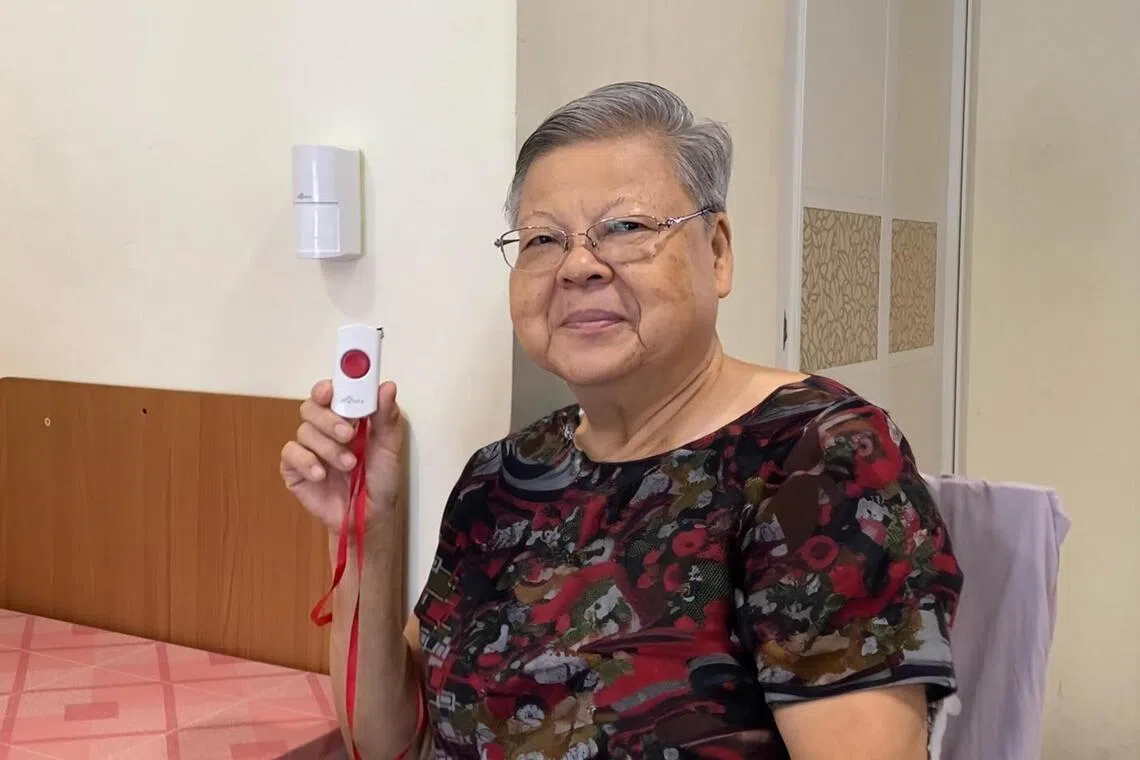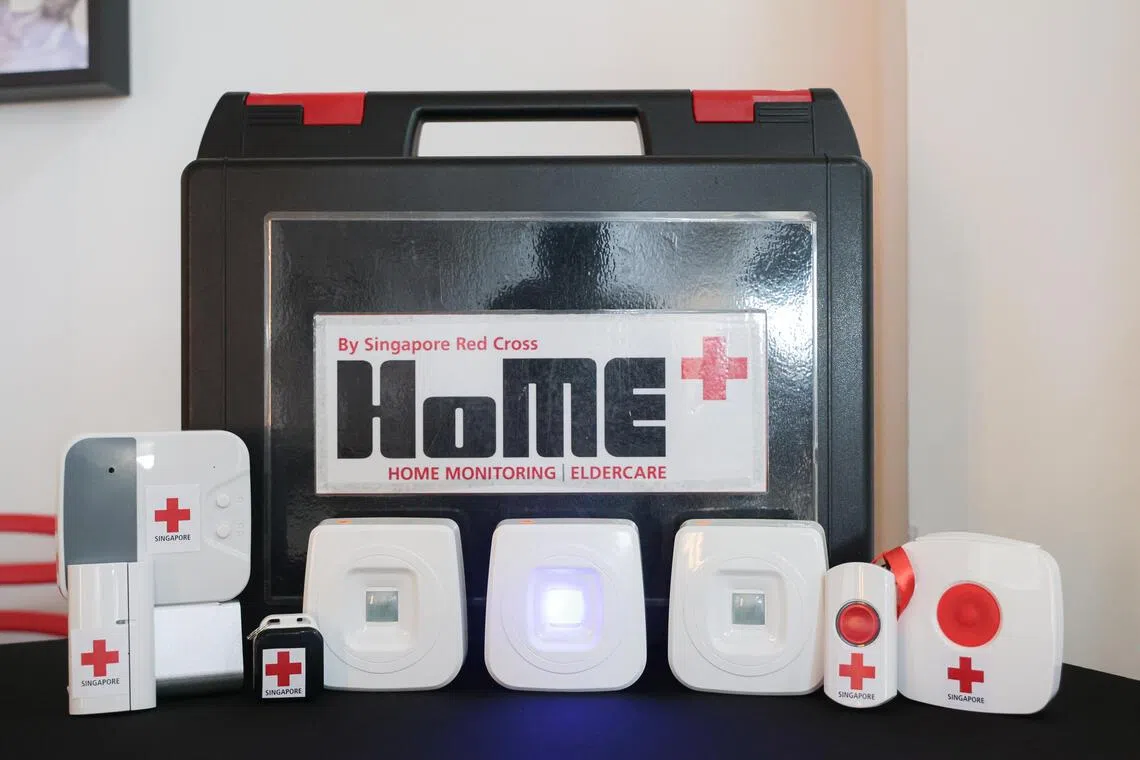New 3D motion detector by S’pore Red Cross will better ensure safety of seniors living alone
Sign up now: Get ST's newsletters delivered to your inbox

Madam Ng Ban Wee, 72, a beneficiary of the Singapore Red Cross who lives alone, will be getting the new 3D motion detector.
PHOTO: SINGAPORE RED CROSS
Follow topic:
- Singapore Red Cross introduces HoME+, an upgraded home-monitoring system using 3D motion detection for seniors living alone, addressing concerns about falls.
- The improved infrared technology accurately detects the senior's location, triggering alerts for prolonged inactivity, while maintaining privacy and reducing false alarms.
- Seniors can trigger alarms via panic buttons, supported by 160 trained volunteers; subsidised rates are available based on CHAS card status and HDB flat size.
AI generated
SINGAPORE –Madam Ng Ban Wee wants to spend her remaining years at home, in the community she is familiar with.
But the 72-year-old widow was worried about how safe it would be to grow older on her own.
“Because I live alone, I used to be concerned that I would fall and no one would come to help me,” she said.
In response to such concerns, the Singapore Red Cross (SRC) on Oct 1 introduced an improved version of its Home Monitoring and Eldercare (HoME+) system that uses 3D motion-detection technology.
And Madam Ng will be getting it.
The existing system
It comes with four sensors that detect movement, and two panic buttons, one of which the senior wears around the neck.
The motion sensors in the home trigger an alert when there is prolonged inactivity – for instance, for a period of four minutes after the senior enters the bathroom.
The new set-up, which comes with improved infrared technology, helps to pinpoint the exact location and direction of the senior within the flat, and notifies the call centre at SRC should it detect non-movement or inactivity.
The upgraded version of HoME+ was launched by Senior Parliamentary Secretary for Law and Social and Family Development Eric Chua at Red Cross House in Penang Lane on Oct 1 – the International Day of Older Persons.
Mr Alan Phuang, assistant head of senior services (ElderAid and HoME+) at SRC’s community engagement department, said that the original version is triggered “when anything moves, even curtains”.
“It is not accurate enough to really detect whether it is the senior – a human being – or his pet,” he said.
“With the upgraded version of improved infrared technology, the 3D motion sensor is able to detect size, and even penetrate cloth. It can detect the presence of a person about 4m to 8m away.”
In an emergency, seniors can press the panic buttons to trigger an alarm at the SRC call centre.
A network of 160 trained volunteer community responders are rostered round the clock to act at a moment’s notice.
“But we cannot break into the flats, and will need help from the police or SCDF (Singapore Civil Defence Force) when we ascertain that the seniors there are distressed,” Mr Phuang said.
The new version also includes a one-way intercom system, allowing the call centre at SRC to reach the person in distress.

The improved version of the Singapore Red Cross’ Home Monitoring and Eldercare system uses 3D motion-detection technology.
PHOTO: LIANHE ZAOBAO
Today, more than 1,200 seniors living alone have the HoME+ system installed in their flats at an affordable price.
Those holding a blue Community Health Assist Scheme (Chas) card and living in one- or two-room HDB flats need to pay only $10 a month for the service.
Those with a blue Chas card and living in three-room HDB flats pay $15 a month, while those with the card and living in four-room or bigger HDB flats pay $20 a month.
A blue Chas card is for lower- to middle-income Singapore citizens with a monthly household income per person of $1,500 or below, or the annual value of their home is $21,000 or below. The card provides subsidies for medical and selected dental care at participating clinics.
It was reported in 2023 that the number of seniors aged 65 and above living alone in Singapore had gone up, from 58,000 in 2018, to 79,000 in 2022.
A study carried out – also in 2023 – by the Centre for Ageing Research and Education at Duke-NUS Medical School predicted that this figure would go up to 83,000 by 2030.


